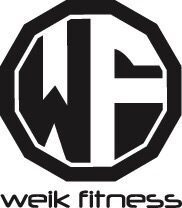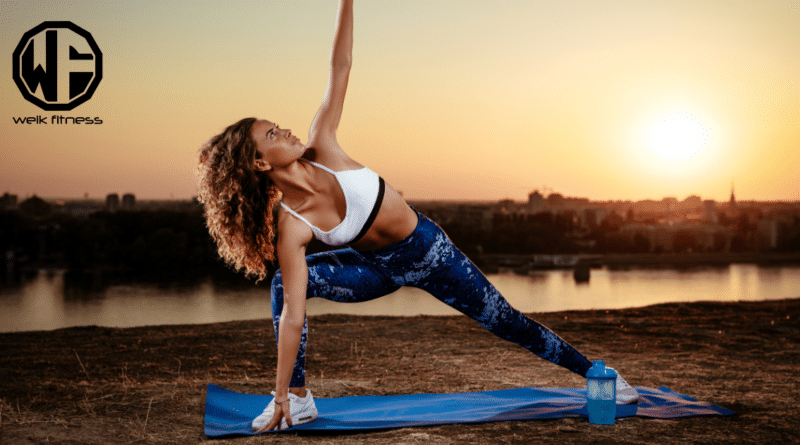Yoga for Athletes: Boost Recovery and Sports Performance
Yoga for athletes — is it good, or is it worthless?
Now, I can hear you saying it already: “Matt, I’m not doing yoga. Yoga is for girls and hippies.” I’m not sure what you want me to say other than yoga for athletes can drastically improve performance.
As an athlete, pushing our bodies to the limit is second nature. Every jump, sprint, and lift takes its toll. Sometimes, we’re left with a muscle tightness that seems to stick around way too long.
It’s a familiar struggle — looking for ways to bounce back faster and up our game. I’ve run into those very challenges myself back when I was a competitive athlete throughout high school and college. I even played a little on the USTA junior circuit before finally zipping up my tennis bag for good.
But in my search for answers on how to improve my game and performance, I discovered something unexpected yet incredibly beneficial — yoga.
RELATED: Goat Yoga is Real — I “Kid” You Not!
Yoga for athletes isn’t just about peaceful mornings; it’s a potent tool for athletes eager to boost their performance and hasten recovery times. Athletes for Yoga offers video tutorials meticulously crafted for the diverse needs of different sports disciplines.
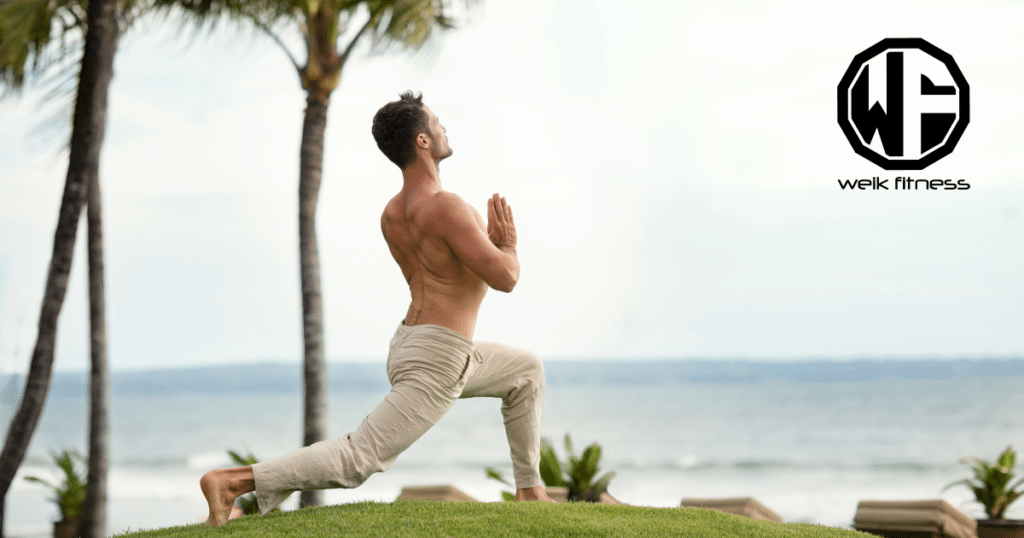
Granted, you don’t need to watch their videos to get the best results. You can do yoga that is specific to athletes and their needs, probably at a yoga studio near where you live.
Through diving deep into this practice and gathering knowledge far and wide — I’ve embraced yoga routines that perfectly complement our rigorous training schedules. While my time is limited, and I haven’t done them in quite some time, I want to at least share the benefits of yoga for athletes.
In this article, we will dive deeper into how yoga for athletes can help improve flexibility, strength, and mental sharpness, and hopefully allow you to minimize the risk of injuries while competing in your sport.
Table of contents
Key Takeaways
- Yoga helps athletes improve flexibility and range of motion, making workouts more effective.
- Regular yoga practice strengthens core muscles, stabilizes movements, and reduces the risk of injuries.
- Specific yoga poses aid in post-workout recovery by soothing tight muscles and increasing flexibility.
- Warm-up sequences before workouts enhance performance, while cool-down stretches help in muscle recovery.
- Advanced techniques like breath control (Pranayama) boost stamina, and concentration exercises improve mental focus.
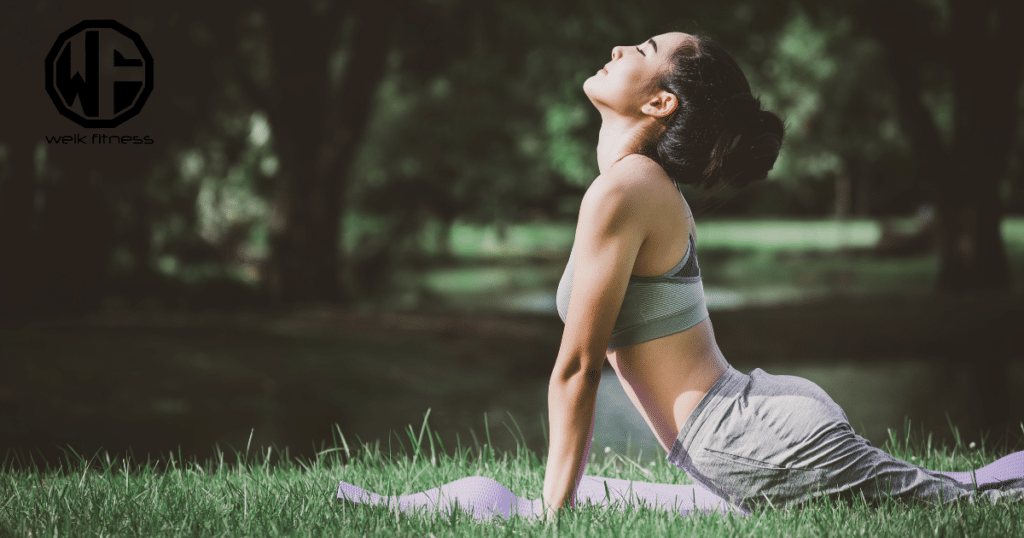
The Benefits of Yoga for Athletes
Yoga enhances flexibility and range of motion, which is vital for athletes. It also strengthens the core and stabilizes muscles to reduce injury risks and support recovery.
1. Yoga Practice Can Boost Flexibility and Range of Motion
I started practicing yoga as part of my athletic training routine all the way back in high school and college to improve my flexibility and range of motion for tennis. I found that yoga really helps in stretching out muscles that can get tight from repetitive sports movements.
This has led to a noticeable difference in how freely I can move, making my workouts more effective.
Different types of yoga, like vinyasa and hatha, target various muscle groups — including the hip flexors and lower body, which are crucial for athletes looking to maintain a full range of motion.
By focusing on these areas, I’ve reduced my risk of injuries caused by muscle imbalances. Regular yoga practice has become a key component in preparing my body for the demands of intense workouts during my athletic days and improving overall athletic performance.
2. Add Yoga to Enhance Core Strength and Stability
Yoga for athletes has revolutionized my core strength and stability. With specific yoga poses targeting the abdominal muscles, back, and hips, I’ve seen significant improvements in my athletic performance.
Practices like plank pose and boat pose challenge the core directly, while balancing poses require stabilization that engages the entire midsection. Cross-training with yoga not only boosts my core strength but also enhances my stability during dynamic movements in other sports.

My routine back in the day included both power yoga sequences and slower hatha classes to balance strengthening with flexibility work. This combination supports muscle growth around the spine and abdomen, laying a foundation for stronger lifts, better posture, and improved endurance.
Plus, focusing on breath control during these practices enhances mental focus — vital for athletes under pressure. Using a yoga mat at home or attending a restorative yoga class weekly keeps this part of a training regimen both accessible and varied.
3. Yoga Stretches for Athletes Reduce Injury Risks and Support Recovery
I found that incorporating yoga into my training routine helps prevent injuries. This practice improves flexibility, addresses muscle imbalances, and strengthens those movements athletes like me (many moons ago) rely on.
Yoga for athletes isn’t just about stretching; it’s a full-body approach to wellness that helps fight inflammation and increases oxygen flow throughout the body. Such benefits aid significantly in recovery, ensuring I was always ready for my next match.
RELATED: Dynamic Stretching — The Advantages You Never Knew Existed
Through personal experience, I discovered yoga was key for supporting post-workout recovery. After intense sessions, certain poses specifically designed for athletes soothe my tight muscles and enhance agility and flexibility.
In college, we had our typical tennis practice (sometimes twice a day) as well as the time we spent in the gym hitting weights.
Implementing yoga for athletes wasn’t an overnight discovery but somewhat of a journey that showed me the power of integrating mindfulness with physical exercise to achieve peak sports performance. Regular practice made all the difference, offering a holistic tool against the common ailments faced by professional athletes like myself.
Essential Types of Yoga Poses for Athletes
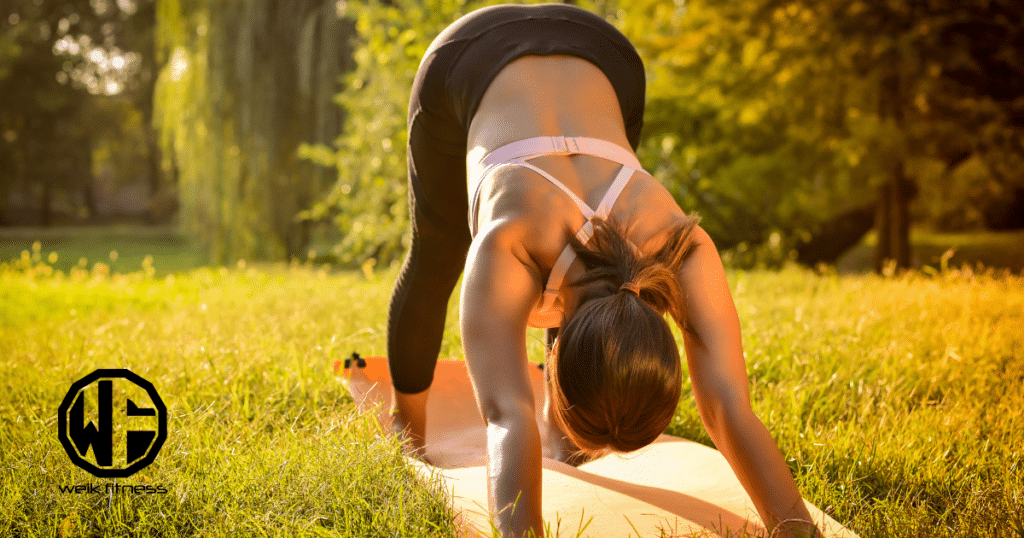
There are many essential yoga poses for athletes that can be done to improve all aspects of their performance. Below, we lay out the main poses to consider:
1. Balance and Agility Improvement Poses for Performance and Recovery
Yoga for athletes offers numerous poses specifically designed to enhance balance and agility. These poses are essential for improving overall athletic performance, reducing the risk of injury, and promoting enhanced body control during sports activities.
Below are some key balance and agility improvement poses that athletes can integrate into their yoga practice:
· Tree Pose (Vrksasana): This pose promotes stability, concentration, and balance while strengthening the legs and core muscles.
· Warrior III Pose (Virabhadrasana III): Enhances coordination, focus, and strengthens the standing leg while improving overall stability.
· Eagle Pose (Garudasana): Improves balance, flexibility in the ankles and calves, and strengthens the lower body muscles.
· Half Moon Pose (Ardha Chandrasana): Develops strength in the legs, ankles, and core while enhancing overall body awareness and stability.
· Crow Pose (Bakasana): Boosts upper body strength, core engagement, and mental concentration, which are essential for maintaining balance.
These yoga poses not only help athletes build physical capabilities but also provide mental focus crucial for excelling in athletic endeavors.
2. Power Sequences in Yoga Workouts for Strength Building
Yoga has power sequences specially tailored to help build strength for athletes. These sequences include:
· Sun Salutations: A dynamic sequence that engages major muscle groups and enhances overall body strength.
· Warrior Poses: These poses focus on lower body strength, including the quadriceps, glutes, and core muscles.
· Boat Pose: This intense core-strengthening pose targets the abdominal muscles and improves balance.
· Plank Variations: The traditional plank pose can be modified to challenge different muscle groups, such as side planks for oblique strength.
· Chair Pose: Engages the leg muscles, especially the quadriceps and hamstrings, building lower body strength.
These sequences are designed to incrementally increase strength and endurance while promoting a balanced and stable physique essential for optimal athletic performance.
3. Recovery Stretches Post-Training Show Benefits for Athletes
After an intense training session, post-training recovery is vital for athletes. Below is a comprehensive set of recovery stretches that can be incorporated into your routine:
· Downward-Facing Dog: This pose stretches the hamstrings and calves while also targeting the shoulders and arms. Hold this pose for 30-60 seconds to release tension in the entire body.
· Seated Forward Bend: Sitting on the floor with legs extended, reach for your toes to stretch the hamstrings, spine, and lower back. Hold for 30 seconds to promote relaxation and release muscle tightness.
· Pigeon Pose: Targeting the hips and lower back, this stretch helps release tension accumulated during training sessions. Take deep breaths while holding this pose for 1 minute on each side.
· Child’s Pose: A restorative stretch that aids in relaxing the back muscles and promoting deep breathing to calm the mind. Hold this pose for 1-2 minutes to relieve any stress or fatigue from training.
· Supine Spinal Twist: Lying on your back, bring one knee across the body while keeping both shoulders grounded to release tension in the spine and hips. Hold for 30 seconds on each side to increase spinal mobility.
· Standing Forward Fold: This move targets the hamstrings, calves, and lower back while encouraging blood flow throughout the body. Hold for 30-60 seconds to alleviate any residual muscle stiffness.
Incorporating these recovery stretches into your routine can help optimize your post-training recovery, support muscle repair, and enhance overall athletic performance.
Incorporate Yoga into Full Body Athletic Training
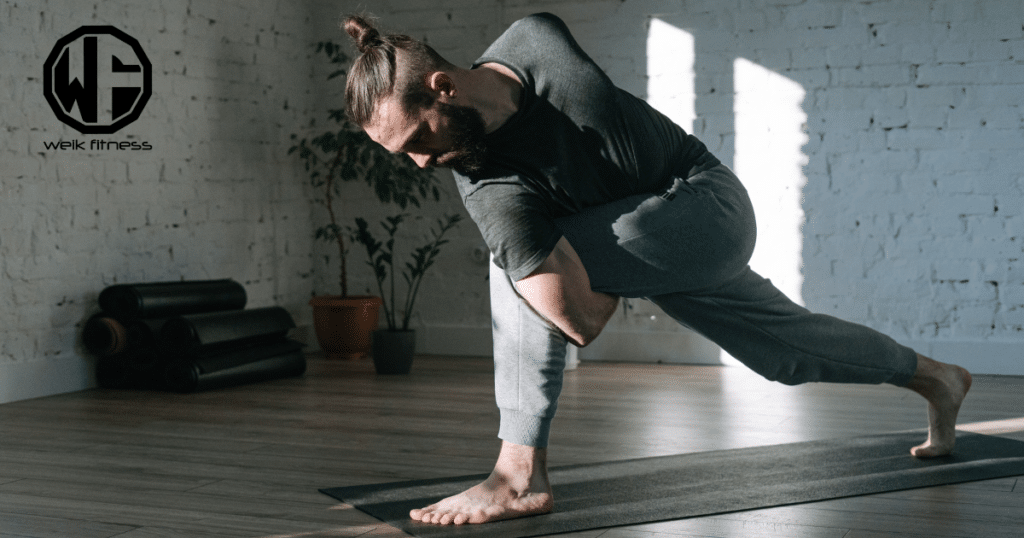
Integrating yoga into athletic training provides a range of benefits, from enhancing flexibility and strength to reducing injury risks. It helps improve performance and aid recovery after intense workouts.
1. Warm-Up Sequences Before Workouts
Before starting any workout, it is recommended to engage in the following warm-up sequences to ensure your body is adequately prepared for physical activity:
· Joint Rotations: Perform gentle joint rotations of the shoulders, hips, and ankles to increase mobility and reduce the risk of injury.
· Dynamic Stretching: Engage in dynamic movements such as leg swings, arm circles, and trunk twists to promote blood flow and loosen muscles.
· Activation Exercises: Incorporate exercises like lunges with a twist or high knees to activate major muscle groups essential for my upcoming workout.
· Cardio Warm-Up: Begin with light cardiovascular exercise, such as a short jog or jumping jacks, to elevate heart rate and prime the body for more intense activity.
· Breathing Exercises: Incorporate deep breathing techniques to focus the mind and prepare for increased exertion during the upcoming training session.
By regularly incorporating these warm-up sequences into my routine, I have experienced enhanced performance and reduced the risk of injury during workouts.
2. Cool-Down Stretches After Workouts
After an intense workout, it’s crucial to cool down properly to aid muscle recovery and prevent injury. Below are the essential cool-down stretches for athletes:
· Hamstring Stretch: Sit on the floor with one leg extended and the other bent. Lean forward from your hips, reaching toward your toes to feel the stretch in your hamstring.
· Quadriceps Stretch: Stand on one leg, bringing your other foot up toward your buttocks and gently pulling it with your hand to stretch the front of your thigh.
· Chest Opener: Standing with feet hip-width apart, clasp your hands behind your back and straighten your arms while opening up your chest.
· Seated Forward Bend: Sit with legs extended, reach for your toes or shins, folding forward from your hips to stretch your lower back and hamstrings.
· Child’s Pose: Kneel on the floor, sitting back on your heels, then walk your hands forward as far as possible to extend your arms in front while lowering your forehead towards the ground.
· Standing Forward Fold: From a standing position, bend forward at the hips and reach for the ground or grab opposite elbows for a full body stretch.
· Shoulder Stretch: Extend one arm across your body at shoulder height and use the other arm to hold it close for a deep shoulder stretch.
Regular Yoga Sessions Benefit Sports Performance
Regular yoga sessions result in continuous benefits for athletes. I, too, have integrated these into my training regimen back when I was competing at a high level. By regularly practicing yoga for athletes, the body gains flexibility and improved balance — essential elements for robust athletic performance.
At the same time, yoga for athletes enhances mental focus through concentration exercises such as Pranayama — a benefit for attaining a competitive edge. The recovery aspect is also something to focus on; encompassing stretches during post-training can lead to reduced injury risks and faster recovery times — vital components for prolonged optimal activity.
The integration of regular yoga provides a holistic approach toward athlete well-being that goes beyond just physical aspects. Specifically tailored warm-up sequences before workouts can improve performance outcomes while also reducing the risk of injuries — an invaluable asset for any athlete wanting longevity in their career.
Furthermore, cool-down stretches after intense workouts protect against muscle soreness and fatigue — enabling quicker readiness for subsequent training or competition engagements.
Advanced Athletic Yoga Techniques for Enhanced Performance
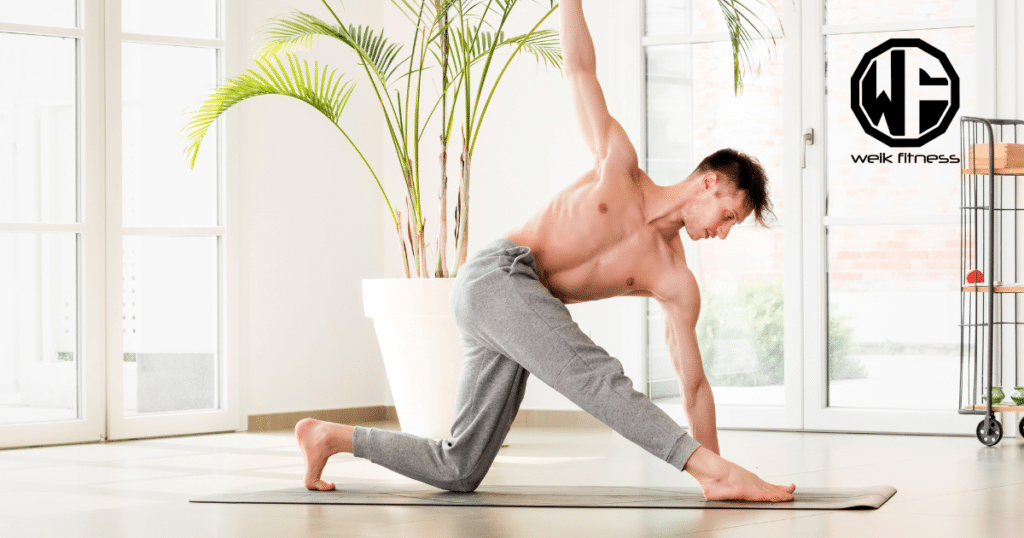
There are various advanced yoga techniques that can enhance performance through things like stamina-boosting breath control (Pranayama). You can also Improve mental focus through concentration exercises to elevate athletic performance.
1. Stamina Boosting Breath Control (Pranayama)
Pranayama, a breathing technique in yoga, can significantly improve stamina and endurance for athletes. Incorporating pranayama into your training routine can lead to enhanced lung function, aiding in better oxygen intake and utilization during physical activity.
Research has shown that consistent practice of pranayama techniques can positively impact athletic performance markers. As an athlete myself, I have experienced the power of pranayama in enhancing my endurance levels back when I was competing, enabling me to push through intense workouts with improved breath control.
Practicing pranayama not only enhances physical stamina but also contributes to mental focus and clarity. Athletes who incorporate pranayama into their training routines often experience improved concentration levels during competitions and training sessions.
By focusing on breath control through pranayama techniques, athletes can elevate both their physical and mental performance on the field or court.
2. Concentration Exercises for Mental Focus
Concentration exercises in yoga for athletes can help enhance mental focus, which is crucial for improved performance. These exercises aid in sharpening attention and building inner resilience.
Athletes can practice techniques such as drishti, which involves gazing at a fixed point to steady the mind, or pranayama, a breath control technique that calms the nervous system while boosting stamina.
Consistent practice of these concentration exercises strengthens the mind-body connection and helps athletes stay present during high-pressure situations.
Yoga coach training programs offer comprehensive guidance on incorporating mental focus exercises into an athlete’s routine. Integrating these techniques not only enhances athletic performance but also supports overall well-being by nurturing a calm and focused mindset essential for success in sports.
Grab Your Yoga Mat and Make Yoga for Athletes Part of Your Routine
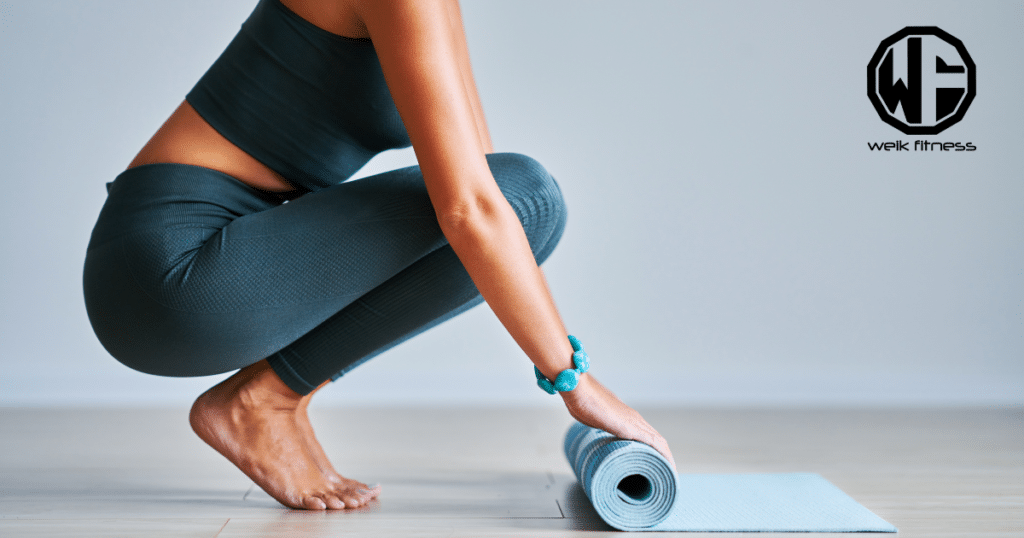
Yoga for athletes can provide you with the edge you need to outperform your competition. Yoga can help boost flexibility, strengthen the core, and reduce injury risks. Integrating essential yoga poses into athletic training can improve performance and aid in recovery.
Related Article: Painkillers — Are They Being Abused By Young Athletes?
Advanced techniques like breath control and concentration exercises further enhance an athlete’s abilities. Embracing yoga for athletes as part of your routine can optimize your physical and mental well-being, ultimately leading to improved performance on the field.
Use yoga to your advantage. Hire a yoga teacher or yoga instructor. Buy a yoga video. Do hot yoga. Do flow yoga. Do bikram yoga. Do vinyasa yoga. Do yin yoga. Do hatha yoga. Try something!
It’s great for athletes and something I recommend adding on top of your strength training for athletes. Many athletes may think they’re “too manly” but fail to realize how yoga is beneficial for athletes to improve strength as well as flexibility and balance.
Yoga for athletes is something you need. The power of yoga is legit. Start with beginner yoga and work up from there. Yoga can improve many aspects of your athletic performance. Grab a yoga mat and experience the benefits!


*Disclosure: This article may contain affiliate links or ads, which means we earn a small commission at no extra cost to you if you make a purchase through these links. These commissions help support the operation and maintenance of our website, allowing us to continue producing free valuable content. Your support is genuinely appreciated, whether you choose to use our links or not. Thank you for being a part of our community and enjoying our content.
PLEASE CONSIDER SHARING THIS ON YOUR SOCIAL MEDIA TO HELP OTHERS LEARN MORE ABOUT THIS TOPIC.
